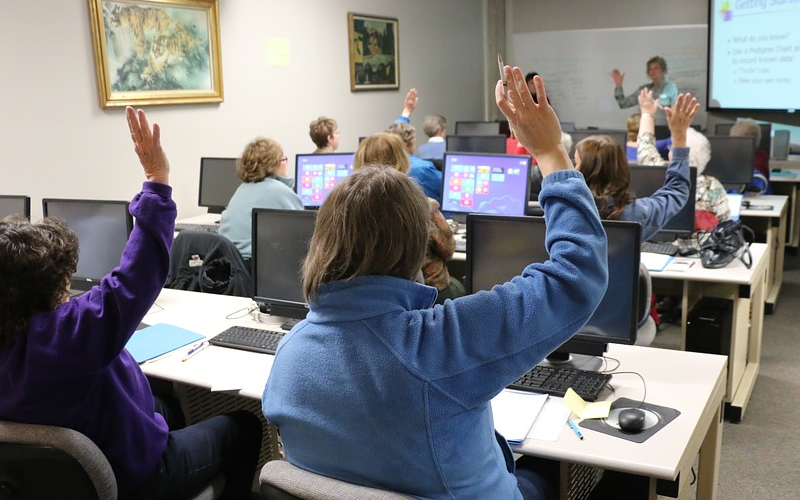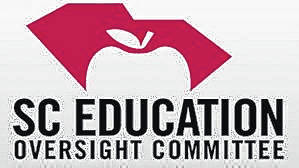
By Lindsay Street, Statehouse correspondent | An increase in high school students dropping out is prompting questions of what the state can do to stanch the rate.
“We can’t just let these kids keep falling through the cracks,” S.C. Rep. Lin Bennett told Statehouse Report. The Charleston Republican serves on the House Education and Public Works Committee. “I don’t think we need to drag our feet on it.”

The S.C. Department of Education released dropout data last month that showed a slight uptick in the rate of dropouts to 2.4 percent during the 2016-17 school year after consecutive years of a declining dropout rate. It has raised alarm bells for education advocates and lawmakers.
While most of South Carolina’s 84 [school districts in 2016-17 lowered their rates of students dropping out, 32 districts saw a jump in the rates, which caused the state’s overall rate to increase.
The annual Report on Student Dropout Rates showed that the state increased from 2.3 percent dropouts among all grades in the state in 2015-16 to 2.4 percent the following year. That’s after the state saw a decline in the dropout rate since 2014.
Some of the highest rates of dropout were seen in these districts: South Carolina Public Charter (7.1 percent), Laurens 55 (5.1 percent), Abbeville (6.0 percent) and Florence 3 (6.2 percent).
In the 2016-17 school year, there were 5,341 students who dropped out public high schools of the 223,647 students enrolled in the state, according to the report. Students who receive federal or state aid, students with disabilities, students not proficient in English and nonwhite male students had the highest dropout rates.
 “It’s not improving. It’s too many. So what do we do?” Education Oversight Committee Executive Director Melanie Barton told Statehouse Report. “For every report, that’s the first question legislators should be asking: so what do we need to do?”
“It’s not improving. It’s too many. So what do we do?” Education Oversight Committee Executive Director Melanie Barton told Statehouse Report. “For every report, that’s the first question legislators should be asking: so what do we need to do?”
Bennett said she was most concerned about the minority school districts that did not improve or worsened.
“The ones that didn’t improve — Charleston County being one of them — were so bad they pulled everyone down,” she said.
Raising the dropout age
One of the solutions floated by South Carolina lawmakers is raising the dropout age. This past year, the bill found bipartisan support, including from Bennett, but that wasn’t enough in to bring the bill out of committee and to the House floor for a vote. Similar efforts in 2010 and 2016 sessions failed.
South Carolina is one of 10 states that allow students to legally end their public education at 17 years old without a diploma. About a quarter of all dropouts occur at every high school grade level, meaning some students are 17 years old as freshmen and drop out then. Fifteen states allow students to dropout at 16, and 24 states allow students to drop out at 18. Texas mandates school attendance until a student has received a diploma or is 19 years old.

S.C. Rep. Raye Felder, R-York, previously opposed raising the dropout age. But as the state works to update truancy laws, she said she is now more open to raising the age and said it may help.
“I feel sure that the legislature will continue to look at the possibility of increasing the age of compulsory attendance,” she wrote in an email to Statehouse Report.
But raising the dropout age doesn’t fix the real problem of “disengagement,” Addis said.
“Dropping out is usually a gradual disengagement process that begins several years before the actual exit time,” he said. “Raising the age primarily delays the exit rather than changes the decision.”
He said a disengaged student could have discipline problems during that extra year.
“A more effective approach is to intervene early with resources and people who can help to remediate some of the risk factors before the disengagement goes too far,” he said.
Other solutions
Bennett is already thinking of other solutions to introduce in January. One idea she is considering is for the state to offer more trade-school type opportunities in high school.
“We need to offer alternatives so that when children get into school there can be different kinds of diplomas. Give them an opportunity. Give them a skill of some sort,” she said. “I think we could save a lot of them if we gave them an opportunity that might be more hands-on than classroom structure.”
Felder also saw an opportunity for more trade-school training.
“Allowing students to have career training and vocational programs that interest them is an opportunity to build momentum for the students to stay engaged in educational opportunities,” Felder said.
Barton said the state needs to become better at assessing students going into the ninth grade to determine if they are “on track to graduate.” She said students who are on track in the ninth grade are four times more likely to graduate.
“The EOC and a panel that is reviewing the accountability system are considering a similar indicator for our schools,” Barton said.
Addis said that while there are steps the state can take, the best steps are taken locally.
“When a local school or community makes a serious gain in graduation rates over a few years, there is almost always a strong school-and-community movement to do so,” he said. “We also see that when this happens, the local school and community do not implement a canned program or an external fix, but instead carefully and strategically analyze their own situation, determine root causes, carefully and deliberately develop a locally-appropriate plan, and carefully and faithfully carry out that plan over time.”
Addis said South Carolina lawmakers can look to states like Mississippi and Maine, where state legislatures have mandated local school or system dropout prevention plans.
“This can work if done right,” he said.
- Have a comment? Send to: feedback@statehousereport.com



We have sponsored Legislation to address this issue for the past 2-3 years. Great to hear that our colleagues are ready to come on board.
Representative Jerry Govan
Ask Teachers. We have plenty of ideas. #ScforEd
FINALLY! After crusading all over the State for three years FINALLY WE’VE BEEN HEARD!
Mark Epstein Mount Pleasant
Working very hard with Represenatives Jerry Govan, Wendell Gilliard, and David Mack to create this change. I feel a little slap in the face our efforts weren’t acknowledged, but great to know we’ve finally been heard!!
Ask us the teachers and students. We have plenty of ideas. Instead of us reaching out to the General Assembly; how about you all make some calls to your constituents or to the schools. How about coming by and seeing what legislation you’re voting for or against and how it affects teachers and students.
Legislators should ask teachers for their insight. #SCforEd
Raising the graduation age will only place more strain on an over run truancy system. Truancy intervention need to begin earlier instead of waiting until high school to send parents and students to court. Trade courses are a great way to keep kids invested in their education. Not every student is destined for university. Not every student needs algebra to be successful. We are expected to individualize lessons and activities for different learning styles yet there is only a singular path to graduation. #ScforEd
Trade Schools and Internships with Business Partners. Students should be able to make a living wage when they leave school, but that takes training and opportunities beyond a traditional school setting. We are so scared that we might not send one kid to college, that we have forgotten that college is not the ticket to financial freedom that it once was (especially figuring in student debt). Here’s how we are doing our students a disservice by forcing them to attend traditional schools for any length of time: https://www.npr.org/sections/ed/2018/04/25/605092520/high-paying-trade-jobs-sit-empty-while-high-school-grads-line-up-for-university #SCforEd
Trade Schools, Career Education, Internships, more Mentoring from the business community are all directions we have been mentioning as a means for our students to stay engaged thru the age of 18.
I have testified twice already at the State House and plan on doing so again. We’re not coming in empty handed. I’m not interested in hearing about a strained truancy system. I’m interested in saving our young people. When this bill passes and teachers are asked to change the way they think about overage and at-risk students it will be a huge step forward for our state.